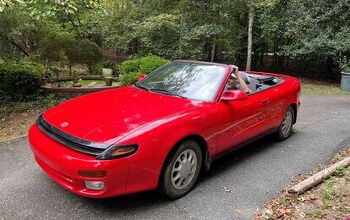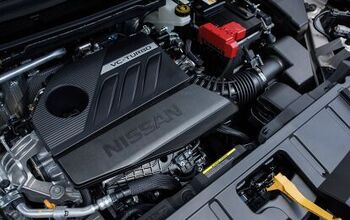OEM vs OE vs Genuine vs Aftermarket: What's The Difference?

If you’ve set out to do a bit of at-home auto maintenance, you’ve probably noticed some of the parts commonly found online can vary greatly in price.
Often, this comes down to that specific part, say a coolant hose, falling into one of these categories: Original Equipment (OE), Original Equipment Manufacturer (OEM), Genuine, or Aftermarket.
Some North American automakers, like Ford, also use the term aftermarket for any parts not made by Ford or its Tier 1 suppliers. North America notwithstanding, these categories, by and large, hold sway over the quality, fit, and compatibility of the part in question. There’s also a little bit of a Goldilocks-porridge-thing going when it comes to the blend of pricing and quality you get with each.
We earn commissions from purchases you make using links in our articles. Learn more.
What Are Genuine Parts?
Now, let’s start with what constitutes a genuine part using the coolant hose mentioned above.
If you purchase a genuine coolant hose for your car, it’s going to come in a branded package with the manufacturer’s logo on it, and the same logo will usually be stamped onto the part. These are parts that have been sourced right from the dealer and in some cases the very same parts that were installed on your car on the assembly line. As far as direct replacements for that busted coolant hose go, these are generally as good as it gets. We’d recommend only using these parts for the big, important stuff (read: not a simple cooling hose).
Alternatively, if the job is a no-expense-spared restoration of a car, for example, genuine parts could be a good fit. They’re effectively guaranteed to fit well and last, and often the parts will have some kind of limited warranty in case they don’t. As you’ve likely guessed, this comes at a significant price premium over OE and OEM parts.
OE Parts Are Just As Good
Here’s some inside baseball: Volkswagen doesn’t make that VW-branded coolant hose you just bought. Instead, Volkswagen has a supplier that does. To those familiar with cars, some of the names of these suppliers, like Bosch, Brembo, or Hella, might ring some bells. These guys make the parts that VW puts into its cars from the factory in almost every instance, and they do it without tossing a VW logo on the side and spicing up the pricing a little. So, if you want quality on a budget, these Original Equipment (OE) parts are the porridge that’s just right.
OEM Parts Are Just A Little Different
Another, separate company might also make a coolant hose for your Volkswagen. VW doesn’t use these at the factory, or sell them in its dealerships. Instead, you’re likely to find them with online retailers or at your local auto parts store. This hose is built to the same spec as a genuine VW part, but never touches a VW product. Instead, this company might make other parts for other VW makes. These are OEM parts, and they’ll often be just a little cheaper than your OE or genuine parts. This isn’t the case for Asian automakers like Toyota or Honda, who use the term “OEM” to define parts they either manufacture themselves or buy from producers and mark with their branding(see above). These are the parts you’ll get over the counter at a dealer, for example. They’ll carry a premium, but like European OE parts, you also get what you pay for. For cheaper parts, the aftermarket can be a solution.
Funnily enough, this is also how some North American automakers choose to handle things. “Genuine Ford OEM Parts,” as the manufacturer puts it, are those parts with the brand’s logo (also made in-house or sourced from suppliers). Any part that doesn’t fall under this category is considered an aftermarket part. Others do things differently still. Dodge and Jeep use the brand name Mopar for officially licensed parts that can be considered OEM. If they’re not Dodge or Jeep parts, or Mopar, then they’re aftermarket.
Aftermarket
Aftermarket parts. These are parts that are not made by an automaker or anyone tangentially related to it. Instead, these guys just make parts for cars. Here, quality, price, and availability can vary wildly. This includes parts that could be total garbage and ones that are high-quality performance upgrades for known mechanical issues alike. Here, it’s best to do your research. Some parts could be made cheaply and will cause your car to throw error codes and light the dash like a Christmas tree.
Thankfully, there are a number of brands considered trustworthy in the aftermarket parts industry, and they are often known to enthusiasts. Checking forums and other online resources, or speaking with other enthusiasts, can help lead you to quality aftermarket parts.
Generally speaking, we recommend buying the parts and fluids your manufacturer recommends. Be that Genuine or OE parts for European vehicles, or OEM parts if you own a Domestic or Asian vehicle. You can thank us later!
Become an AutoGuide insider. Get the latest from the automotive world first by subscribing to our newsletter here.
Shop For Deals On Car Parts
A quick note on getting your mitts on these parts: thanks to online shopping, it’s very easy to get just about any part from a variety of sources. Generally, we’d recommend buying new parts from reputable sources, which could mean going to the dealer, or at least phoning them, where a parts counter representative can be an excellent asset in helping you fix your car.
Of course, sometimes all you need is a part number, which can be easily searched on Amazon!

Chase is an automotive journalist with years of experience in the industry. He writes for outlets like Edmunds and AutoGuide, among many others. When not writing, Chase is in front of the camera over at The Overrun, his YouTube channel run alongside his friend and co-host Jobe Teehan. If he's not writing reviews of the latest in cars or producing industry coverage, Chase is at home in the driver's seat of his own (usually German) sports cars.
More by Chase Bierenkoven



































Comments
Join the conversation
The truth is, many manufacturers produce and sell the exact same part they make for the OE’s to numerous aftermarket brand suppliers. While an air or oil filter may be supplied by Fram to an OEM, the exact same product may also be supplied to Wix, Hastings, Purolator, etc.
I kept and wheeled hard an '87 XJ for 285,000 miles until stolen. Replaced all the usual parts that wear out I.e., water pumps, brakes, alternators, clutches, etc. I never spent another dime on such parts after the first replacement...... they came with lifetime warranties and lasted longer than the factory stuff. Those were the good old days. A different generation is buying cars today.